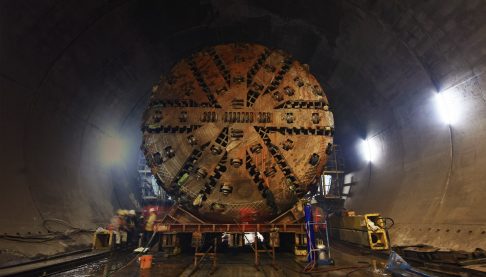
Mega transport projects mean mega cost blowouts: new Grattan report
Australian governments are committing to a record number of 'mega' transport projects, and that exposes taxpayers to mega risks of cost blowouts, according to a new Grattan Institute report.
The rise of megaprojects: counting the costs finds that 10 years ago there was just one transport infrastructure project in Australia worth more than $5 billion. Today there are nine, and costs have already blown out by $24 billion on just six of them.
Inland Rail from Melbourne to Brisbane was costed at $4.4 billion in 2010; it's now estimated to cost $9.9 billion. Melbourne's North East Link was costed at $6 billion in 2008; it's now expected to cost $15.8 billion. The Sydney Metro City & Southwest was costed at $11 billion in 2015; this year the NSW Government announced the latest cost estimate is $15.5 billion.
Even before the megaprojects era, cost overruns were a megaproblem. Over the past two decades, Australian governments spent $34 billion more on transport infrastructure than they first told us they would. Analysis of all projects valued at $20 million or more and built in the past 20 years shows that the actual costs exceeded the promised costs by 21 per cent.
Big projects are particularly risky. More than one third of overruns since 2001 came from just seven big projects.
Projects announced before governments are prepared to formally commit are also particularly risky. About one third of projects are announced prematurely; they account for more than three quarters of the cost overruns.
Australian governments are now fast-tracking transport projects in the quest for an infrastructure-led recovery from the COVID-19 recession. But spending big on transport projects conceived before COVID makes little sense, because the pandemic has pushed population growth over a cliff, and fewer people will commute in future as working from home becomes part of 'COVID normal'.
'The danger is that governments are rushing to waste our money on what may turn out to be a herd of white elephants,' says the report's lead author, Grattan Institute Transport and Cities Program Director Marion Terrill.
Even before the pandemic, the Prime Minister, federal Treasurer, and state infrastructure ministers were worried that there weren't enough workers, materials, and machinery for the massive construction workload. When there are already bottlenecks, racing to build projects dreamt up before the pandemic just pushes up prices.
'Taxpayers would get bigger bang for their buck if politicians steered clear of what they like to call "nation building" and "city shaping" mega projects, and instead spent more on upgrading existing infrastructure and on social infrastructure such as aged care and mental health care,' Ms Terrill says.
The pandemic should prompt governments to rethink major projects that have been promised or are under construction, particularly those announced without a business case. The report recommends governments continuously disclose to Parliament material changes to expected costs and benefits, as listed companies are required to disclose to the stock exchange. And to avoid ending up here again in future, governments should collect data on and learn lessons from past projects.
'The key lesson is that megaprojects should be a last, not a first resort,' Ms Terrill says.






